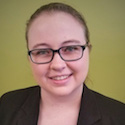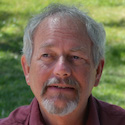Congratulations to the 2019 SGCI Science Ambassadors!
- Details
- Published on Sunday, 17 February 2019 19:00
The Science Ambassadors are here! After careful review of an excellent pool of Science Ambassador applicants, we’ve selected five Ambassadors who, during the course of the year, will be spreading the word about the impact of gateways. Each recipient will receive $1200 in travel support to attend a domain conference, attend or teach a gateway training event, or promote the use of a gateway in education.
Meet the 2019 Ambassadors!
Samantha Blickhan (Digital Humanities)

Samantha Blickhan is the IMLS Postdoctoral Fellow at the Adler Planetarium in Chicago, IL, and Digital Humanities Lead for Zooniverse.org. She plans to use the travel funds to lead a weeklong course on academic crowdsourcing at the Oxford Digital Humanities Summer School in the United Kingdom. The course will teach attendees how to use the Zooniverse Project Builder to build a crowdsourcing project using image-based data. This will further distribute a methodology that encourages researchers from a multitude of academic disciplines to make use of science gateways to not only communicate their research to a large group of people, but to invite members of the public to take part and to learn by doing.
Alexis Garretson (Biology)

Alexis Garretson is a graduate student in Biology at Brigham Young University in Provo, UT. She plans to use the travel funds to present her gateways-related research and to travel to a training seminar to learn how to use new science gateways. Her research focuses on using legacy data to investigate the effects of climate change in ecological systems. Alexis started working with gateways as an undergraduate student analyzing phenology data. Working with data inspired her to develop lesson plans and materials for using gateways in the classroom. Alexis is also a Community Fellow with the Earth Science Information Partners (ESIP), working with their Data Stewardship Committee and Software Citation Cluster.
Mohamed Mousa (Neuroscience)

Mohamed Mousa is a Ph.D. candidate and graduate research assistant at Wright State University in Dayton, OH. He plans to use the travel funds to present his work at the Society for Neuroscience meeting (SFN) in Chicago. His current work is on small conductance potassium channels (SK) that play an important role in the pathogenesis of Amyotrophic lateral sclerosis (ALS) disease. Mohamed has been using the Neuroscience Gateway for his research, which has provided him with multiple tools, has sped up his simulation speeds, and has allowed him to organize files and results in a systematic way.
Jack Smith (Water Quality)

Jack Smith is a research scientist at Marshall University in Huntington, WV, and the Cyberinfrastructure Coordinator for West Virginia Science and Research. He plans to use the travel funds to promote the Aquavit gateway at the National Water Quality Monitoring Council Conference. Jack has been working on Aquavit, a research collaboration portal, for over three years, and is currently developing a WQX-compatible water quality data portal that will leverage the GeoEDF framework. The Aquavit gateway has facilitated the collaboration of researchers across multiple institutions in West Virginia and the Appalachian region doing water quality research. He has also worked with the MyGeoHub gateway, the GABBs project, and Water HUB team at Purdue through an XSEDE Campus Champions Fellowship project and, more recently, as Co-PI on a collaborative NSF CSSI grant with the GABBs team to develop the GeoEDF framework.
James Trevathan (Neuroscience)

James Trevathan is a Ph.D. candidate at the Mayo Clinic in Rochester, MN. He plans to use the travel funds to present his current work, which makes use of computations performed on the Neuroscience Gateway to analyze calcium imaging data. This data was collected to study the effects of subthalamic nucleus deep brain stimulation on striatal neural activity in a mouse model of Parkinson's disease. Although deep brain stimulation of the subthalamic nucleus has become a common treatment, the therapeutic mechanisms are not well understood. James wants to promote the gateway’s potential to help answer these questions by enabling computationally intensive analysis on large data sets.
If you'd like to contact one of our Science Ambassadors to learn about the gateway(s) they've used, let us know, and we'll put you in touch with them. We can’t wait to hear about their experiences in the coming year when each Ambassador will contribute a blog post to tell their story.